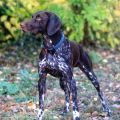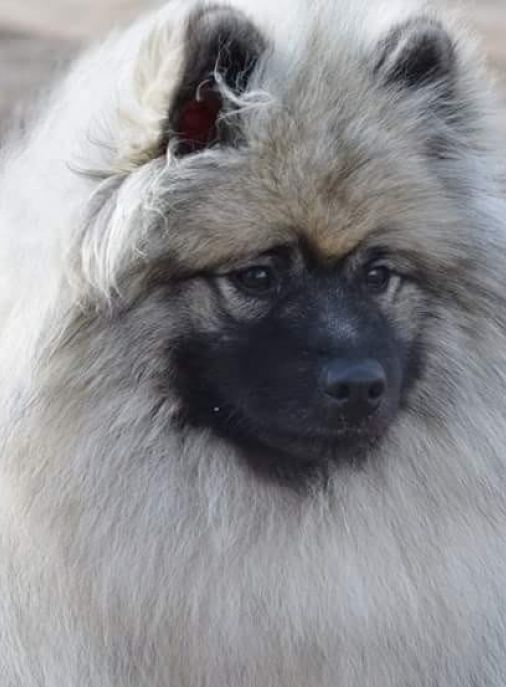The German Spaniel, also known as the Deutscher Wachtelhund, is a versatile and intelligent dog breed that has gained popularity for its exceptional hunting skills and amiable nature. This breed is classified as a medium-sized dog and is known for its distinctive appearance and remarkable abilities in the field. In this comprehensive text, we will delve into the history, characteristics, and various aspects of the German Spaniel breed.
Originating in Germany, the German Spaniel has a rich history that dates back several centuries. It is believed that the breed was developed by crossing various spaniel-type dogs with local scent hounds. The goal was to create a versatile hunting dog that could excel in tracking, flushing, and retrieving game. The breed's name, Wachtelhund, translates to "quail dog," emphasizing its proficiency in hunting quails.
According to the Fédération Cynologique Internationale (FCI) typology, the German Spaniel belongs to Group 8: Retrievers, Flushing Dogs, and Water Dogs. Within this group, it is classified under Section 2: Flushing Dogs, with a standard number of 104. This classification highlights the breed's exceptional flushing abilities, which make it an excellent choice for hunters.
The German Spaniel is primarily bred for hunting purposes, and its skills in tracking and retrieving make it an invaluable companion for hunters. However, its friendly and sociable nature also makes it a wonderful family pet. This breed thrives on human companionship and forms strong bonds with its family members. Its intelligence and trainability make it suitable for various activities, including obedience, agility, and search and rescue work.
In terms of physical characteristics, the German Spaniel is a medium-sized dog with a well-proportioned body. Males typically stand between 18 to 20 inches (45 to 50 cm) at the shoulder, while females are slightly smaller, measuring around 17 to 19 inches (43 to 48 cm). The breed's weight ranges from 44 to 66 pounds (20 to 30 kg), with males being slightly heavier than females.
The German Spaniel has a dense and water-repellent double coat, which consists of a soft undercoat and a slightly wavy or straight outer coat. The breed's coat color can vary, but it is commonly seen in combinations of brown, white, and black. The breed's expressive eyes are typically dark brown, and its ears are long and pendulous, hanging close to the head.
With proper care and nutrition, the German Spaniel has an average life expectancy of 12 to 14 years. Regular exercise is essential for this breed, as it has high energy levels and requires mental and physical stimulation. Daily walks, playtime, and opportunities to engage in hunting-related activities are crucial to keep this breed happy and healthy.
One interesting fact about the German Spaniel is its exceptional scenting abilities. This breed has a highly developed sense of smell, which allows it to track game with precision. Additionally, the German Spaniel is known for its strong swimming skills, making it an adept water retriever. Its webbed feet and water-resistant coat enable it to navigate through water effortlessly.
In conclusion, the German Spaniel is a remarkable dog breed that excels in hunting, tracking, and retrieving. Its history, versatile abilities, and amiable nature make it a popular choice among hunters and families alike. With its intelligence, trainability, and affectionate disposition, the German Spaniel is a loyal companion and a valuable asset in the field.
The German Spaniel, also known as the Deutscher Wachtelhund, is a versatile and intelligent breed of dog that possesses a unique and captivating character. With their friendly and affectionate nature, these dogs make excellent companions and are highly regarded for their exceptional hunting abilities. In this text, we will delve into the character of German Spaniels, exploring their behavior, ideal training methods, and how to raise them to be well-rounded and obedient pets.
One of the defining characteristics of German Spaniels is their amiable and sociable disposition. They are known to be extremely friendly and get along well with both humans and other animals. This makes them an excellent choice for families with children or multiple pets. They thrive on human companionship and are always eager to please their owners, making them highly trainable and responsive to commands.
German Spaniels are also renowned for their intelligence and quick thinking. They possess a natural instinct for hunting and have an exceptional ability to track scents, making them excellent working dogs. However, it is important to note that their hunting instincts can sometimes lead them to be easily distracted by interesting scents or movements. Therefore, early training and socialization are crucial to ensure they develop good manners and self-control.
When it comes to training, German Spaniels respond best to positive reinforcement techniques. They are sensitive dogs and do not respond well to harsh or punitive methods. Instead, they thrive on praise, treats, and rewards. Consistency and patience are key when training a German Spaniel, as they can be independent thinkers and may test boundaries. However, with the right approach, they can quickly grasp commands and excel in obedience training.
Exercise is an essential aspect of raising a German Spaniel. These dogs have high energy levels and require regular physical and mental stimulation to prevent boredom and destructive behavior. Daily walks, playtime, and engaging activities such as agility training or scent work are highly recommended. A tired German Spaniel is a well-behaved German Spaniel, so providing them with ample exercise opportunities is crucial for their overall well-being.
German Spaniels are known for their loyalty and devotion to their families. They form strong bonds with their owners and thrive on being included in family activities. They are not suited for a life of solitude or being left alone for long periods. If left alone for extended periods, they may develop separation anxiety or engage in destructive behaviors. Therefore, it is important to ensure they receive plenty of attention, mental stimulation, and companionship.
In conclusion, German Spaniels are delightful dogs with a friendly and sociable character. They are highly trainable, intelligent, and possess a natural instinct for hunting. Positive reinforcement training methods, early socialization, and regular exercise are essential for raising a well-rounded and obedient German Spaniel. With the right care and attention, these dogs make loyal and loving companions, bringing joy and happiness to their families.
The German Spaniel, also known as the Deutscher Wachtelhund, is a versatile and intelligent breed that requires specific care to ensure their well-being and happiness. Here are some tips on how to care for German Spaniel dogs, including what to do and what not to do:
1. Exercise: German Spaniels are active dogs that require regular exercise to stay healthy and mentally stimulated. Aim for at least one hour of exercise daily, including walks, runs, and playtime. Engage them in activities like retrieving games or agility training to satisfy their natural instincts.
2. Mental Stimulation: These dogs are highly intelligent and need mental stimulation to prevent boredom and destructive behavior. Provide puzzle toys, interactive games, and obedience training sessions to keep their minds sharp. Engaging them in scent work or tracking exercises can also be beneficial.
3. Grooming: German Spaniels have a dense, water-repellent coat that requires regular grooming. Brush their coat at least once a week to remove loose hair and prevent matting. Pay extra attention to their ears, as they are prone to infections. Clean their ears regularly and check for any signs of redness or discharge.
4. Training: Start training your German Spaniel from an early age to establish good behavior and obedience. They are eager to please and respond well to positive reinforcement techniques. Socialize them with other dogs, animals, and people to ensure they grow up to be well-rounded and friendly companions.
5. Nutrition: Provide a balanced and high-quality diet that meets the nutritional needs of your German Spaniel. Consult with your veterinarian to determine the appropriate portion sizes and feeding schedule based on their age, weight, and activity level. Avoid overfeeding to prevent obesity, which can lead to various health issues.
6. Health Care: Regular veterinary check-ups are essential to monitor your German Spaniel's overall health. Vaccinations, parasite prevention, and dental care should be part of their routine healthcare. Additionally, be aware of breed-specific health concerns such as hip dysplasia and eye problems. Regular exercise and a healthy diet can help minimize these risks.
7. Family Interaction: German Spaniels thrive on human companionship and are known to be excellent family dogs. Include them in family activities and provide them with plenty of love and attention. Avoid leaving them alone for extended periods as they may develop separation anxiety.
8. Safety: Ensure a safe environment for your German Spaniel by securing your yard with proper fencing and gates. Keep harmful substances, toxic plants, and small objects out of their reach. Provide them with a comfortable and well-insulated shelter if they spend time outdoors.
9. Avoid Harsh Training Methods: German Spaniels are sensitive dogs that respond best to positive reinforcement training methods. Avoid using harsh punishments or physical force, as it can damage their trust and lead to fear-based behaviors.
10. Avoid Overexertion: While German Spaniels have great stamina, avoid overexerting them, especially in extreme weather conditions. Monitor their activity levels and provide them with adequate rest and water breaks during intense exercise sessions.
Remember, every German Spaniel is unique, and their care may vary slightly based on their individual needs. By providing them with proper care, love, and attention, you can ensure a happy and healthy life for your German Spaniel companion.
The German Spaniel, also known as the Deutscher Wachtelhund, is a versatile and intelligent breed that is highly regarded for its exceptional hunting abilities. When it comes to their appearance, German Spaniels exhibit a range of colors, each possessing its own unique charm. However, there is one color that is particularly common and distinctive among these dogs.
The most prevalent color seen in German Spaniels is a rich and lustrous liver, often referred to as liver roan or liver and white. This coloration is characterized by a deep, chocolate brown coat that is beautifully accented with white markings. The liver color is evenly distributed throughout the dog's body, giving it a striking and eye-catching appearance.
Starting from the head, the liver color is usually seen on the muzzle, which is broad and well-developed. The nose is typically brown, harmonizing with the overall color scheme. The eyes of a German Spaniel are usually dark and expressive, adding depth and warmth to their appearance. The ears, which are set at eye level, are adorned with the same liver color, blending seamlessly with the rest of the coat.
Moving down the body, the liver color continues to dominate. The neck is strong and muscular, covered in a dense coat that showcases the rich brown hue. The chest and shoulders are broad and well-defined, displaying the liver color prominently. The back is straight and sturdy, leading to a well-muscled hindquarters that are also adorned with the same liver coloration.
The legs of a German Spaniel are robust and well-boned, providing the dog with the agility and strength required for its hunting prowess. The liver color extends down the legs, creating a harmonious flow from head to toe. The paws, which are compact and strong, are also covered in the same liver shade, completing the overall color scheme.
The tail of a German Spaniel is usually docked to a medium length, and it too exhibits the liver color. The tail is carried at a moderate height and is in constant motion, showcasing the dog's enthusiasm and energy.
The liver roan or liver and white coloration of German Spaniels is not only visually appealing but also serves a practical purpose. The liver color helps these dogs blend into their natural surroundings while hunting, making them less visible to their prey. Additionally, the white markings provide a striking contrast, further enhancing their overall appearance.
In conclusion, the common color of German Spaniel dogs is a rich and lustrous liver, often accompanied by white markings. This color scheme, with its deep chocolate brown coat and striking white accents, not only adds to their visual appeal but also serves a functional purpose in their hunting endeavors. German Spaniels are truly a breed that exemplifies both beauty and utility.
The German Spaniel, also known as the Deutscher Wachtelhund, is a versatile and intelligent breed that excels in various activities such as hunting, tracking, and retrieving. Like any other breed, German Spaniels are prone to certain health issues that owners should be aware of to ensure their well-being. In this text, we will explore the most common diseases found in German Spaniels and discuss how to care for their health.
One of the most prevalent health concerns in German Spaniels is hip dysplasia. This condition occurs when the hip joint doesn't develop properly, leading to discomfort, pain, and eventually arthritis. Responsible breeders conduct hip evaluations to minimize the risk of passing on this genetic condition. Regular exercise, a balanced diet, and maintaining a healthy weight can help reduce the impact of hip dysplasia.
Another common health issue in German Spaniels is ear infections. Due to their long, floppy ears, these dogs are more prone to developing infections caused by trapped moisture, debris, or bacteria. Regular ear cleaning with a veterinarian-recommended solution can help prevent infections. Additionally, it is important to dry the ears thoroughly after swimming or bathing.
Progressive Retinal Atrophy (PRA) is an inherited eye disease that affects German Spaniels. PRA causes a gradual deterioration of the retina, leading to vision loss and, in severe cases, blindness. Regular eye examinations by a veterinary ophthalmologist can help detect PRA early on, allowing for appropriate management and care.
Like many other breeds, German Spaniels can also suffer from allergies. These allergies can manifest as skin irritations, itching, and gastrointestinal issues. Identifying and eliminating potential allergens from their environment, such as certain foods or environmental triggers, can help manage these allergies. In some cases, medication or hypoallergenic diets may be necessary, so consulting with a veterinarian is crucial.
To maintain the overall health of German Spaniels, regular veterinary check-ups are essential. These visits allow for early detection of any potential health issues and ensure that vaccinations and preventive treatments, such as flea and tick control, are up to date. Regular dental care, including brushing their teeth and providing appropriate chew toys, can help prevent dental diseases, which are common in many dog breeds.
Exercise is vital for German Spaniels to keep them physically and mentally stimulated. These dogs have a high energy level and require daily activities such as walks, runs, or playtime in a secure area. Mental stimulation through training, puzzle toys, and interactive games is also crucial to prevent boredom and destructive behavior.
Proper nutrition is key to maintaining the health of German Spaniels. Feeding them a high-quality, balanced diet that meets their specific nutritional needs is essential. Avoiding overfeeding and monitoring their weight is crucial to prevent obesity, which can lead to various health issues.
In conclusion, while German Spaniels are generally a healthy breed, they are prone to certain health conditions like hip dysplasia, ear infections, PRA, and allergies. Regular veterinary care, including check-ups, vaccinations, and preventive treatments, is crucial to ensure their well-being. Providing them with regular exercise, mental stimulation, and a nutritious diet will help keep them happy and healthy throughout their lives.
The German Spaniel, also known as the Deutscher Wachtelhund, is a versatile and energetic breed of dog that requires a well-balanced and nutritious diet to maintain optimal health and performance. Proper nutrition plays a crucial role in supporting their overall well-being, including their physical development, immune system, and energy levels. In this text, we will delve into the nutritional needs of German Spaniels and provide advice on how to feed them appropriately.
First and foremost, it is important to understand that German Spaniels are active dogs with a moderate to high energy level. They were originally bred as hunting dogs, which means they require a diet that provides them with sufficient energy to sustain their daily activities. A diet rich in high-quality proteins, healthy fats, and complex carbohydrates is essential for their overall health and performance.
Protein is a vital component of a German Spaniel's diet as it supports muscle development and repair. It is recommended to feed them a diet that contains at least 18-22% protein. Good sources of protein for dogs include lean meats like chicken, turkey, and fish. These can be served cooked or raw, depending on your preference and the dog's individual needs. It is important to avoid feeding them processed meats or those high in sodium, as they can be detrimental to their health.
Healthy fats are another important aspect of a German Spaniel's diet. Fats provide a concentrated source of energy and are essential for the absorption of fat-soluble vitamins. Including omega-3 fatty acids in their diet can help support their immune system, promote a healthy coat, and reduce inflammation. Fish oil, flaxseed oil, and salmon are excellent sources of omega-3 fatty acids. However, it is important to feed them in moderation, as excessive fat intake can lead to weight gain and other health issues.
Complex carbohydrates are a valuable source of energy for German Spaniels. Opt for whole grains like brown rice, quinoa, and oats, as they provide a steady release of energy and are rich in fiber. Fiber aids in digestion and helps regulate bowel movements, promoting a healthy gastrointestinal system. Avoid feeding them foods high in simple carbohydrates, such as refined grains and sugary treats, as they can cause spikes in blood sugar levels and contribute to weight gain.
In addition to macronutrients, German Spaniels require a variety of vitamins and minerals to support their overall health. Feeding them a balanced diet that includes a mix of fruits and vegetables can help fulfill these requirements. Some safe options include carrots, sweet potatoes, blueberries, and spinach. However, it is important to avoid feeding them toxic foods like grapes, raisins, onions, and garlic, as they can be harmful to their health.
When it comes to feeding schedules, German Spaniels generally thrive on two meals per day. This allows for better digestion and prevents them from overeating. It is important to monitor their weight and adjust their portion sizes accordingly to maintain a healthy body condition. Providing access to fresh water at all times is also crucial to keep them hydrated.
In conclusion, German Spaniels require a well-balanced and nutritious diet to support their active lifestyle and overall health. A diet rich in high-quality proteins, healthy fats, and complex carbohydrates, along with a variety of fruits and vegetables, will help meet their nutritional needs. Avoiding processed foods, toxic ingredients, and excessive fat intake is essential. Remember to consult with a veterinarian to determine the specific dietary needs of your German Spaniel and make any necessary adjustments to their diet.








